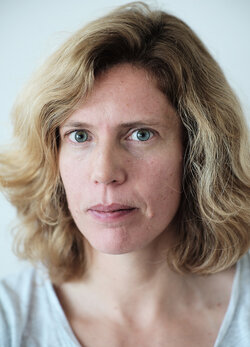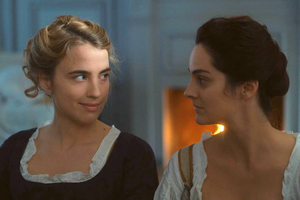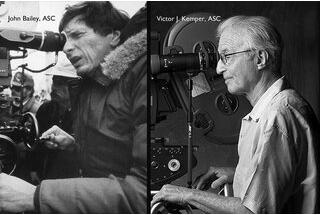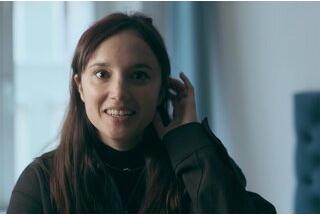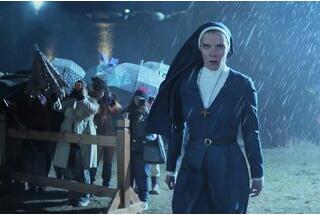Claire Mathon, AFC, discusses her work on Céline Sciamma’s film “Portrait de la jeune fille en feu”, by Céline Sciamma
Screentests in digital and 35mm
The choice as to the recording format was discussed very early on. Screentests comparing 35mm-Leica Summilux and RED Monstro-Leica Thalia convinced us to choose the RED Monstro for its incarnation and the presence that were apparent from the first faces we filmed. I think that the size of the sensor and the finesse of these images, shot in 7K, participate in creating that sensation. But the tests also gave us a film reference we used when we colour timed the digital images, particularly in its contrasts. Céline Sciamma’s film portrays the memory of a love story that takes place in the 18th century, but we didn’t want to highlight the past dimension; instead, we wanted to invent our own 18th century — “our2018th century,” said Céline — by giving it a contemporary resonance.
Following these tests, I took photos on film throughout shooting, so that we could use them as references. This was actually the beginning of a series of portraits of Céline, photos taken under the film’s lights. A different way of questioning the relationship of creation between the person who looks and the person who is looked at. As Céline says, “In our atelier, there is no muse. There are only colleagues who mutually inspire one another.”
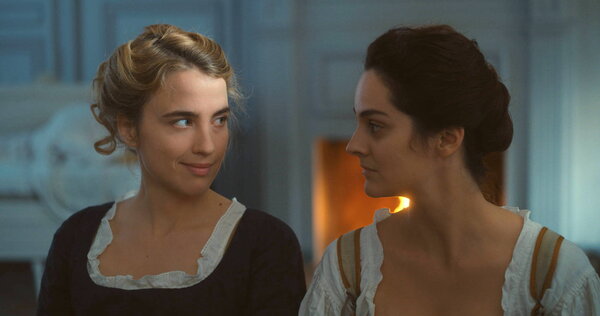
Portraits and faces
Painting and the work of painting are very present in this film.
I obviously began by interesting myself in the painting of the 18th century and its female painters (Vigée Le Brun, Artemisia Gentileschi, and Adélaïde Labille-Guiard). We went to the Louvre together. The female painter in the film does not exist, Céline chose a young painter, Hélène Delmaire, who was the same age as the character and who had classical training in oil painting. The three of us worked together to create her paintings and to define their rendering. It was important to Céline that we film her work and the gestures of her work in real time.
Even though it wasn’t the same period, Corot’s portraits inspired us. In them, one doesn’t much perceive the colour and the direction of the light, but rather how the light causes the colour of skin, of fabric, and the backgrounds to appear... as though the colour of the light was what is most capable of causing the subject’s colours to appear.
The rendering of skin colour was primordial in my work. I sought both softness, with no hard shadows, a slightly satiny and non-realistic result that remains natural and extremely living. The makeup artist, Marie Luiset, and I together took the time to visualize this max of lens/lighting/filter/makeup over the course of several tests with the actresses and the costumes. We had to blur the raw and contemporary aspect of the faces, while keeping the precision and the nuances of the colours, but finding a rendering of the skin that would bring a bit of the period into the image through its picturality. We often discussed the faces in terms of landscapes.
I took a great deal of pleasure in watching the actresses, in capturing the slightest variations, in getting to know their features and in seeing how the light and the camera angles would modify them.
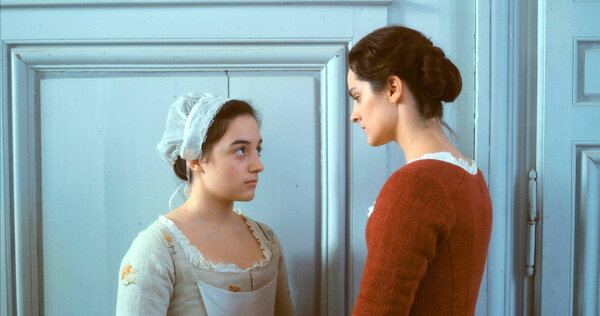
Looking/Image and directing
The relationship that I have with Céline is truly one of the cinema. We have a shared pleasure and faith in cinematography and in cinematographic fabrication. Céline’s directing style is very precise and the image is one element of that. I remember the long takes (the film is often filmed with long takes) of the two actresses which were extremely choreographed, down to the millimetre of the position of their faces in relation to one another, such as the shot of them in profile, on the cliff, where Marianne cannot see Héloïse because of how close they are to one another.
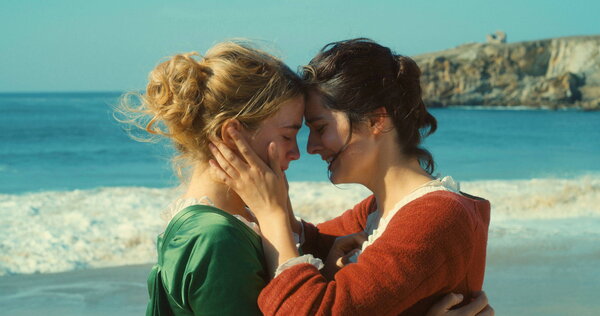
We worked a great deal on the rhythm of these shots. The film is first and foremost a love story: Céline wanted to embody “desire and the thought of desire.” We had to look at these faces and not frame them. The length of the takes participates in that desire. We re-watched some of Bergman’s films, as he was magnificently able to film women with a unique proximity and intimacy.
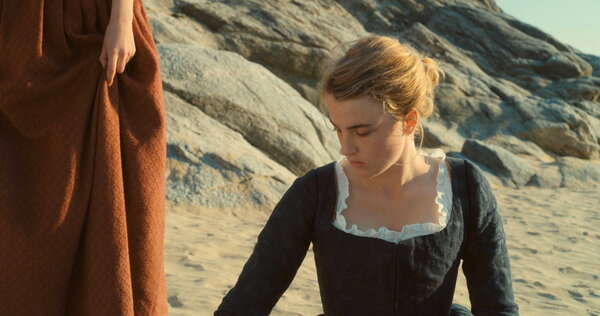
Filming the dialectic of the gazes, the force of attraction between the two women, was one of the subjects of my work with Matthieu Caudroy who had to try to be a camera that looks, that peers. These shots were almost all filmed with a 70 mm lens and I wanted to find the correct centring of the faces within the frame.

The interiors of the studio
We first shot all of the outdoors in Brittany, and then we shot the château in Seine-et-Marne. This 18th-century château hadn’t been lived in or restored, and its woodwork, its colours, and its parquet floors had remained frozen in time. The set designer, Thomas Grezaud, very carefully respected the materials and worked on the sketches of the location.
The château was a difficult (and expensive) location to light, because of its dimension and because the artist’s studio was on the 1st floor (8-metre-tall windows on the courtyard side and 16-metre-tall on the moat side), not to mention the constraints of a listed historical monument. Within the studio, all of the lighting was artificial. Ernesto Giolitti, the gaffer, the key grip, Marc Wilhelm, and I together had a large structure built on one side so that we could master the light and cause it to change sequence by sequence. LEDs on DMX, which were controlled by an iPad, allowed us to adapt to the weather and the changes in the light outdoors. The windows were managed with chassis outfitted with various neutral densities and scrims, which were made-to-measure for each window by the set design team during pre-light. I tried to make it natural, with random variations in the lighting, with the memory of the changing and living light from our shooting in Brittany, we liked to think that we’d brought a bit of Quiberon sand back with us in our pockets.
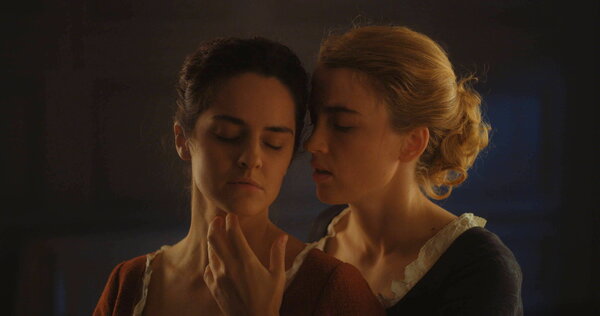
The candles
I was lucky to be able to do a series of tests to refine the amount of light from the sources, the smoke and the flames that we were going to use at night. Producer Bénédicte Couvreur gave me a lot of support and allowed us to devote time to working on the image, and I am very grateful to her for that.
For the candles, I didn’t want to be too realistic, too dependent on the candles, even though the light had to be believable for that time. From the first tests, Céline and I felt that what we wanted on our sketches encouraged us (insofar as possible) to place the candles outside of the frame. I kept the idea of darkness, of mystery, without necessarily following those directions exactly.
I spent a lot of time seeking the right warmth, the right colour that would enable us to preserve richness in the colours, especially for the painting and the skin tones. The colour at night was the most complicated thing to manage in colour timing.

Another subject of our tests was the movement of light, the scintillating of the flames that we tried to attenuate as much as we could. I liked it when the candlelight resulted from a mix of various sources: candles installed in the cone of a blonde, 2 000K LED strips (Softlight), and small tungsten bulbs set up on garlands (Rope Lights). The complexity of the long takes often required us to perch lights that Ernesto Giolitti had created from lightweight LED strips.
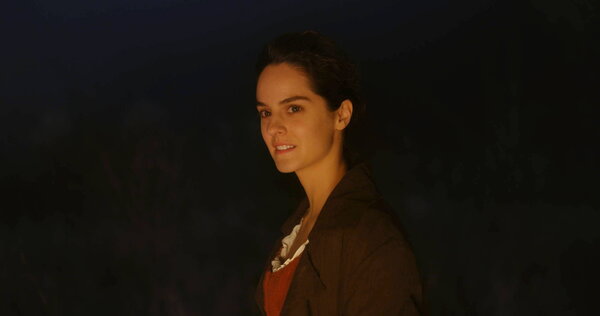
Follow-up on the dailies and colour grading
Colourist Jérôme Bigueur was an important partner for me at every step of my work: tests, shooting during which he supervised the dailies, and of course, final colour timing. This long-term collaboration allowed us to make the right choices for the rendering of skin. For example, I didn’t filter while shooting when a flame was in the frame, leaving that work to colour timing. Colour timing took a bit over three weeks, and this time was invaluable. To the end, I sought a balance between the memory, the period, and the present of this passionate love story.
(Interview by François Reumont, transcription and formatting by Hélène de Roux, translated from French by Alexander Baron-Raiffe on behalf of the AFC)
Portrait de la jeune fille en feu
Set designer: Thomas Grezaud
Costumes: Dorothée Guiraud
Makeup Artist: Marie Luiset
Painter (hand double): Hélène Delmaire
Sound: Julien Sicart
Editing: Julien Lacheray
- Watch the filmed interview in which Claire Mathon discusses Portrait de la jeune fille en feu.
 En
En
 Fr
Fr